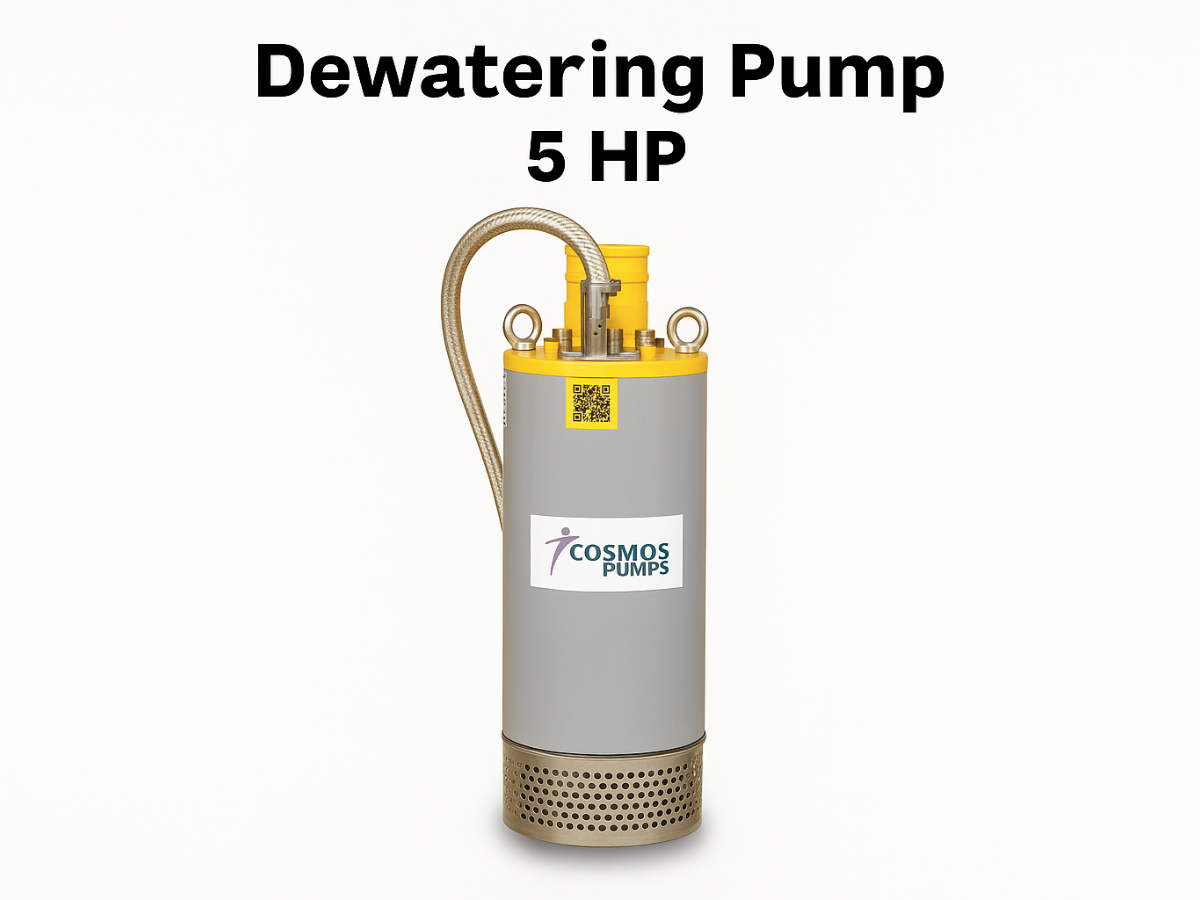
Understanding the difference between sewage and drainage pumps is an important aspect of fluid handling where industry utilities are concerned. In fact, this applies even more to industries such as construction, sewage treatment, and municipal services. Both of these pumps are able to move liquids, but they serve different purposes. And are handled differently in cases of needs and waste or water types. This blog will center on the primary differences between sewage pumps and drainage pumps, their respective functions, and how one would choose the most suitable type of submersible waste pump based on requirements.
What is a Sewage Pump?
A sewage pump is designed to move the most common wastewater and solids found within a sewage system. These pumps can work in residential, commercial, or industrial applications where sewage is moved away from basements, drainage systems, or within septic systems. A submersible sewage pump is built to be able to handle larger solids and bigger particles which is also the reason why it has a more powerful motor and strong-built components.
It may handle human excreta, papers from human activities, oils, and many more rubbish materials that can be found in sewage systems. They are commonly used in:
- Septic Systems: To transfer wastewater from the home or company to a treatment facility;
- Sewage Treatment Plants: Typically the efficient conveyance and treatment of waste streams resulting from sewage into or through treatment plants;
- Flood Prone Areas: Keeping sewage systems clear during flooding or heavy rains.
What is a Drainage Pump?
A drainage pump is intended for lifting clean water or that is mixed with small impurities like mud and sediment. These pumps carry surface, groundwater, or rainwater that accumulates in areas like basements or construction sites, open spaces, etc. They do not deal very much with intercepting solid wastes, but they are very necessary for evacuating water in flooded areas or for preventing water from accumulating.
Common Uses of Drainage Pumps include:
- Flooding Control: for removing the water collected in flooded buildings, roads, or yards
- Construction Sites: Maintaining excavation spaces free from water
- Stormwater Drainage: Conveying excessive rainwater from the drainage system of a metropolitan area
- Basement Water Removal: It prevents the accumulation of unwanted water which can cause mold and structural damage.
Key Differences Between Sewage Pump and Drainage Pumps
- Design and Build
Sewage pumps have impellers and motors that are quite strong enough to handle large waste and solids in systems. In most cases, they are grinder or cut-off pumps designed to cut solids into smaller pieces so that they can be easily handled by the water drain pump without jam or other unusual operational problems. Drainage pumps, however, are intended for lighter duties, primarily just handling water mixed with smaller impurities.
- Fluid Type
Sewage must be that which is mixed with human waste and waste produced by human activities. Drainage is defined as the water washed away by rain involves impurities such as mud, sand, or even leaves.
- Applications
These pumps are used in septic systems and at wastewater treatment plants and in sewage lines. Drainage pumps are used in flood control, construction dewatering, and water removal from areas where water does accumulate.
- Capacity and Durability
Sewage pumps are usually larger, tougher, more powerful than drainage pumps. Because they have to handle solid waste as well as be put to much tougher use compared to drainage pumps. Although most of them are still robust and built for much simpler tasks and are thus smaller.
- Power and Efficiency
Sewage pumps require more power since they require waste to be moved through pipes or systems; drainage pumps are often more energy efficient since they move a less dense liquid.
Choosing the Right Pump for Your Needs
An understanding of your specific needs in terms of fluid handling will help you choose between a sewage pump and a drainage pump. Here are a few tips that can help you to decide:
- For Wastewater and Solid Waste: sewage pump if it’s about displacing large solids or wastewater from septic tanks, households, or industrial applications.
- For Clean or Lightly Contaminated Water: a drainage pump is perfect for collecting rainwater, surface water, or small debris-mixed water.
- For Flooded Areas: In areas prone to flooding or during heavy downpours, a drainage pump clears collected water faster; a sewage pump is more efficient for addressing sewer blockages or waste removal.
Conclusion
Both sewage as well as drainage pumps are essential tools in fluid handling, but they have been designed specifically for different operations. Sewage pumps are specialized for the management of waste and sewage material. While drainage pumps easily empty clean waters or those containing a small percentage of waste or impurities. Understanding their functionalities and differences will enable an informed selection of the drain cleaning pump best suited to any specific application. Whether for residential sewage disposal or flooded construction sites, there is a right pump that the owner should choose for smooth fluid handling.
Also, We provide a whole spectrum of quality pumps applicable for many different purposes, including sewage and drainage applications. So, Contact Cosmos Pumps for more information about our diverse products to find the right pump for you!

